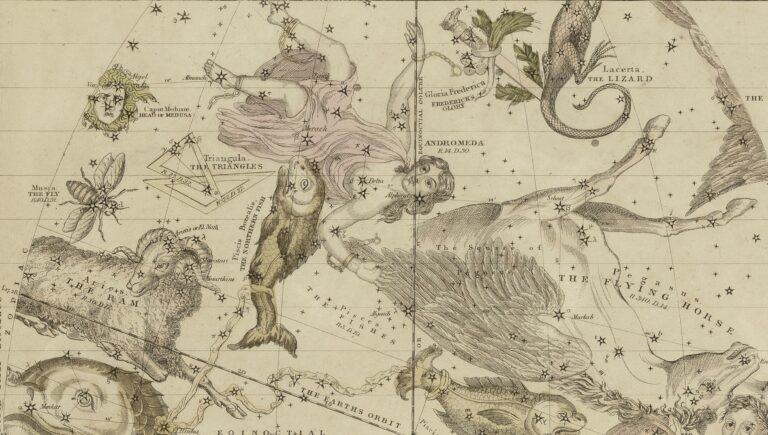Key Takeaways:
A team in Australia are a little bit closer to locating Planet Nine. In a press release issued yesterday, a group of scientists from the Australian National University announced that they’d successfully located four objects while sorting through data from the SkyMapper Southern Sky Survey. Two are known minor planets Chiron and Comacina, as for the others, “one is most assuredly an asteroid. The other, I’m not sure,” says ANU astrophysicist Brad Tucker in an interview with Astronomy.
The Australian team are working in tandem with the public to search for what could possibly be one of the biggest discoveries of the century: a new, very massive planet. In 2016, Caltech astronomer Mike Brown and theoretical astrophysicist Konstantin Batygin announced that they’d found evidence of a massive planet orbiting far off in the annex of the solar system with a predicted orbit of 20,000 years. Its presence is inferred from the orbit of several Kuiper Belt Objects which have dramatic orbits.
If it’s there, it’s orbit is so elliptical and swings so far out that difficult to spot visually even with the world’s best telescopes. Brown has been using the Subaru telescope, owned and operated by the National Astronomical Observatory on Mauna Kea to scan the skies for any blip of light that matches their predictions. So far, the hunt is still ongoing, but Brown and Batygin needed help, so they made the parameters for the search public and now people around the world are trying to locate Planet Nine, and quickly.
Astronomers at the Australian National University have teamed up with citizen science website Zooniverse in order to get the public to sift through the data faster. They’re using a map of the sky from SkyMapper Southern Sky Survey data, similar to the Sloan Digital Sky Survey. In combination, both hemispheres of the sky will be covered, leaving it up to the people to find the planet.
So far, more than 60,000 people have identified over 4 million objects and they’re just getting started. While it’s unlikely that the fourth unknown object from their recent find is Planet Nine, it’s a testament to their process that they’re finding small objects far off in the solar system. “If Planet Nine was at perihelion, its gravitational influence would have been seen already in Cassini telemetry,” says Batygin.
The likelihood that the planet is the farthest away from the sun is also making things a bit trickier, but that probably won’t deter either team. The SkyMapper Survey doesn’t have the ability to observe most of Planet Nine’s anticipated 20,000 year orbit and is probably limited to observing it while at perihelion, but as Batygin explains, “Our theoretical analysis suggests that Planet Nine is currently in the outer third of its orbit, close to aphelion.” So the fact that Sky Mapper hasn’t found it yet is consistent with what Batygin and Brown have predicted about Planet Nine’s orbit, it’s the farthest from the sun that it can get.
In an email Brown told me that he’s thrilled about the public getting involved in the search, and is excited to see what may come from the ANU team. “It is extremely hard to know which of the many different techniques people are attempting will strike gold, but the more that are tried, the quicker the final result it likely to be!”
Because Planet Nine is likely at the furthest point in its 20,000 year orbit, it’s making the discovery that much harder. Brown has already searched the entire sky for objects with a magnitude as low as 19. For comparison, our Sun ranks a -27 for its magnitude, and getting dimmer we get to Venus at -5; even the smaller dwarf planet Pluto is a 14 on that scale and Planet Nine would be about 1000 times more faint than Pluto.
If Planet Nine is out there, it’s expected to be 10 times more massive than Earth and around a magnitude of 22 based on its estimated distance but Tucker is confident that their survey data will get them to objects with a magnitude as low as 22, putting Planet Nine within reach. Batygin explains, “ they will actually be able to go down to 22nd magnitude by stacking, “ which is a common process that takes several exposures of a patch of sky to create a composite image. “It’s quite impressive. This covers a substantial section of the orbit.”
It likely won’t take 100 years to figure out whether or not Planet Nine exists, between the citizen science projects and the many teams around the globe, including Brown and Batygin. With their eyes pressed to computer screens and telescopes, they should know in the next few years exactly what’s causing all the ruckus in the great beyond.
If you’re interested in joining the ranks of other astronomers around the world, you can participate in the search that uses the Sky Mapper data and look through grainy images yourself where you’ll find stars, galaxies and specs of other worlds, maybe even a new planet. The project does have the endorsement of the official Planet Nine team after all, “I love this project!” says Brown. “As much as we would like to find Planet Nine ourselves, we think that finding it through a citizen science program would be the best story ever!”










